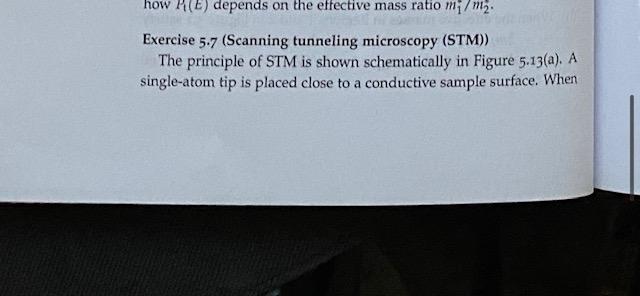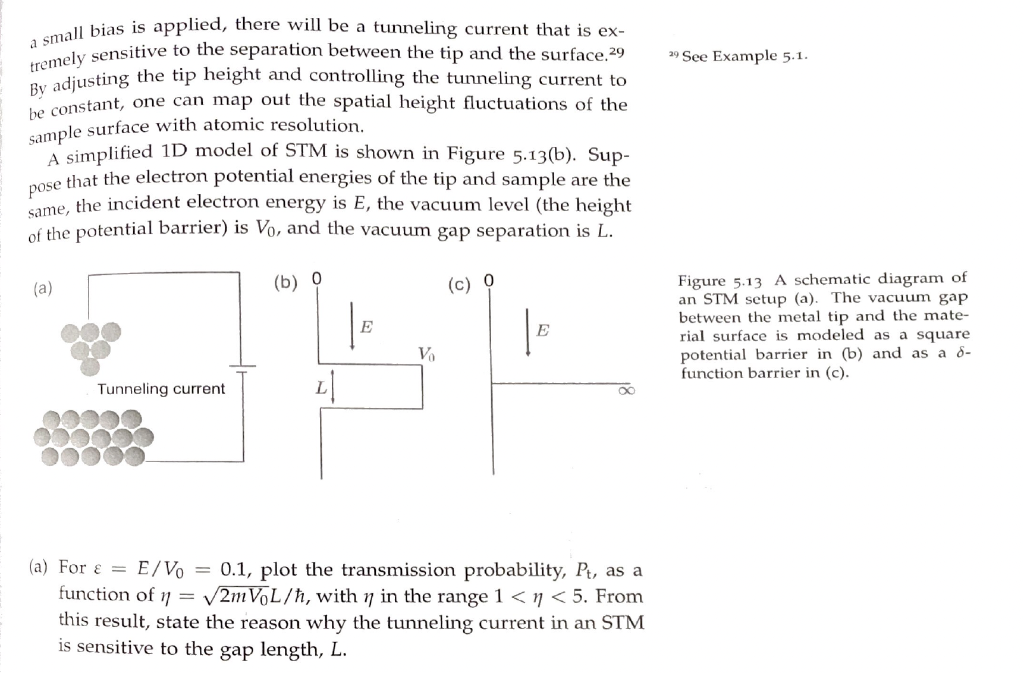Home /
Expert Answers /
Advanced Physics /
exercise-5-7-scanning-tunneling-microscopy-stm-the-principle-of-stm-is-shown-schematicall-pa632
(Solved): Exercise 5.7 (Scanning tunneling microscopy (STM)) The principle of STM is shown schematicall ...
Exercise 5.7 (Scanning tunneling microscopy (STM)) The principle of STM is shown schematically in Figure 5.13(a). A single-atom tip is placed close to a conductive sample surface. When
a small bias is applied, there will be a tunneling current that is extremely sensitive to the separation between the tip and the surface. See Example 5.1. By adjusting the tip height and controlling the tunneling current to be constant, one can map out the spatial height fluctuations of the sample surface with atomic resolution. A simplified 1D model of STM is shown in Figure 5.13(b). Suppose that the electron potential energies of the tip and sample are the same, the incident electron energy is , the vacuum level (the height of the potential barrier) is , and the vacuum gap separation is . Figure 5.13 A schematic diagram of an STM setup (a). The vacuum gap between the metal tip and the material surface is modeled as a square potential barrier in (b) and as a function barrier in (c). (a) For , plot the transmission probability, , as a function of , with in the range . From this result, state the reason why the tunneling current in an STM is sensitive to the gap length, .
Expert Answer
Step 1 : The following solution given below

